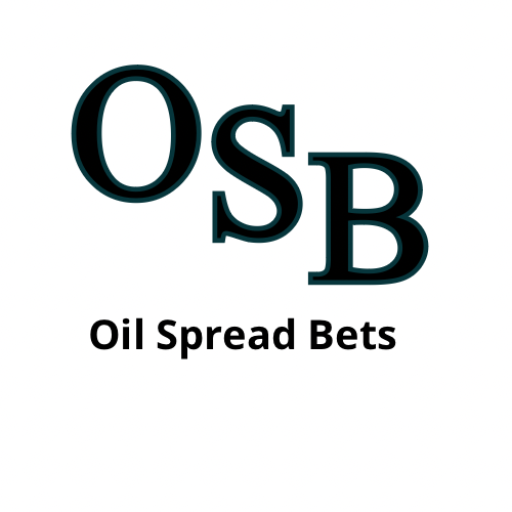Brent Crude Rises to $70.36: Key Drivers Behind This Week’s Oil Price Surge
Brent crude oil began the week of 6 July trading at $67.78 per barrel. By the close of play on 13 July, it had risen to $70.36—a gain of 3.8% over seven days. This price increase reflected a delicate equilibrium between two dominant forces: rising global oil output and ongoing geopolitical and logistical risks that threaten to constrain supply. These market conditions created opportunities and volatility that spread betters and commodity investors were quick to analyse and act on.
Price movements during the week reflected both the strengthening fundamentals in physical supply and the persistent risk premiums associated with critical trade routes and sanctioned barrels. With traders continually weighing the upside and downside drivers, the current environment remains highly reactive to rapidly evolving developments.
Key Supply and Demand Drivers
OPEC+ Ramps Up Output
Throughout July and into August, OPEC+ nations have committed to aggressive production increases. This follows a period of voluntary cuts aimed at supporting prices earlier in the year. The renewed focus on reclaiming market share—particularly from non-OPEC producers—has led to an increase in crude entering the global system.
While these additional barrels have raised concerns about potential oversupply, many market participants remain cautious. Inventories in key consuming regions are still well below seasonal averages, and spare capacity across several producers remains tight. As such, the market continues to reflect a tug-of-war between long-term supply ambitions and short-term logistical realities.
Persistent Near-Term Tightness
Despite increased output from OPEC+ members, the structure of the Brent futures curve remains in backwardation. This market condition, where near-term contracts trade at a premium to longer-dated ones, signals ongoing concern over immediate supply availability.
Operational constraints at major refineries and temporary maintenance at strategic pipeline systems have further contributed to this tightness. With reduced throughput in certain regions, refiners and traders are willing to pay more to secure prompt physical delivery, reinforcing the bullish undertone in the front end of the curve.
Shipping Lane Risks Keep Prices Firm
Tensions in the Red Sea intensified over the past week. Renewed attacks on commercial vessels by Houthi forces in Yemen disrupted key shipping lanes that serve as a gateway for millions of barrels of crude oil and refined products.
As tankers were rerouted around the Cape of Good Hope, voyage durations and associated freight costs rose sharply. These higher transportation expenses fed directly into prompt oil prices, contributing to sustained risk premiums. The market is increasingly sensitive to maritime security developments, particularly in regions critical to global oil transit.
Uncertainty Around Trade Tariffs
The spectre of an expanded US tariff regime targeting Chinese industrial goods introduced fresh concern around future oil demand. Traders fear that strained trade relations between the world’s two largest economies could suppress manufacturing activity, thereby reducing global energy consumption.
Although no new tariffs were formally implemented during the week, rhetoric from both sides raised doubts about the demand outlook. This uncertainty weighed on market sentiment mid-week, temporarily tempering the upward momentum in Brent prices before renewed geopolitical risks reclaimed focus.
How Equity Markets Responded
The week’s rise in oil prices triggered a mixed response across energy-related equities, underlining the nuanced impact of macro and sector-specific variables.
U.S. shale Producers saw modest share price pressure early in the week as Brent dipped below key support near $68. At those levels, economics for higher-cost shale plays become less favourable, prompting investor caution.
International Oil Majors such as Shell, BP, and TotalEnergies performed more steadily. Their diversified portfolios and long-term hedging strategies provided a buffer against short-term price swings, helping to stabilise share performance.
Refiners and Petrochemical Firms posted modest gains. Crack spreads widened due to higher refined product demand and temporary supply bottlenecks. This marginal uplift in refining margins supported share prices in the sector.
Overall, equities mirrored the volatile nature of crude prices. Spread betters who closely tracked intraday movements and sector rotation were well-positioned to capitalise on the week’s fluctuations.
Political and Economic Influences
Fresh Sanctions on Russia and Iran
The US and EU introduced new sanctions during the week, aimed at limiting Russian crude exports and curbing Iran’s maritime logistics capabilities. Russian oil was forced to trade at deeper discounts—up to 15% below global benchmarks—while Iran faced renewed restrictions on tanker access and financing.
Together, these measures could potentially reduce global availability by up to 1 million barrels per day. While OPEC+ production has risen, traders are keenly aware that any disruption in sanctioned supply could tip the market back into tightness.
EU Floats Dynamic Price Cap
Brussels also proposed a flexible cap on Russian crude sales, designed to restrict Moscow’s revenue without destabilising broader markets. The mechanism would adjust in response to global price movements, creating both opportunities and confusion for traders.
While EU member states continue to debate enforcement logistics and the role of secondary sanctions, the proposal maintained upward pressure on Brent. The potential for a cap to create regional supply imbalances is likely to remain a live concern in the coming weeks.
Saudi Arabia’s Balancing Act
Saudi Arabia, a key driver of OPEC+ policy, continues to walk a fine line between defending market share and supporting price stability. While it has endorsed higher production volumes, Riyadh remains acutely aware of the risks of oversupply.
Carefully worded statements from Saudi officials have helped reassure markets that output increases will be responsive to demand signals. However, the lack of a firm ceiling leaves room for future price volatility if demand falters unexpectedly.
Ongoing Security Alerts in the Red Sea
Heightened Houthi activity in the Red Sea has not only affected shipping but also raised insurance premiums for tankers transiting the region. Several insurers imposed war risk surcharges on vessels operating near affected zones.
These higher costs have added to market risk perceptions, pushing front-month Brent above $69 during intra-week peaks. The threat of further attacks remains a critical short-term wildcard.
Spread Betting Outlook and Key Levels
For spread betters, the current setup presents tactical opportunities in both directions:
Bullish View: If geopolitical tensions continue to escalate, particularly in maritime routes or through the imposition of new sanctions, Brent may break above the $71.50 resistance zone. A clean breach could open the door to $72.50 or higher.
Bearish View: Conversely, a dovish statement from OPEC+ or unexpected easing in sanctions could push prices back toward $68. A drop below this level might extend to $66 as technical support weakens.
Technical Focus: Key levels for the week ahead include support at $68, resistance at $71.50, and a pivot around $69.50. Spread betters should watch for high-impact headlines related to OPEC+ commentary, EU policy announcements, and security developments.
What to Watch in the Coming Week
Looking ahead, several factors will shape market direction:
-
OPEC+ Production Signals: Any deviation from the current plan could shift momentum sharply.
-
Sanctions and Policy Moves: Ongoing decisions around Russian and Iranian oil exports remain market-critical.
-
Red Sea Disruptions: Security updates will influence risk premiums and shipping costs.
-
US–China Trade Talks: Clarity on tariffs and trade flows will impact demand expectations.
-
Inventory Data: Weekly crude and product stock levels, particularly in the US, will confirm or challenge the tightness narrative.
By closely monitoring these developments, spread betters can remain agile and position themselves effectively for the next move.
Conclusion
The period from July 6 to 13, 2025, illustrated how global oil markets remain finely balanced between rising output and ongoing supply threats. Brent crude advanced by nearly $3 per barrel as OPEC+ expansion plans were offset by mounting geopolitical pressures and fresh Western sanctions.
Equity markets reflected the complexity of these cross-currents, rewarding traders who acted decisively and timed their exposure to energy-linked assets. With volatility likely to persist, technical awareness and headline sensitivity remain key to successful spread betting. Utilise clear support and resistance levels, stay informed about global policy shifts, and remain prepared to react as events unfold.
Keep an eye on the oil prices here.


